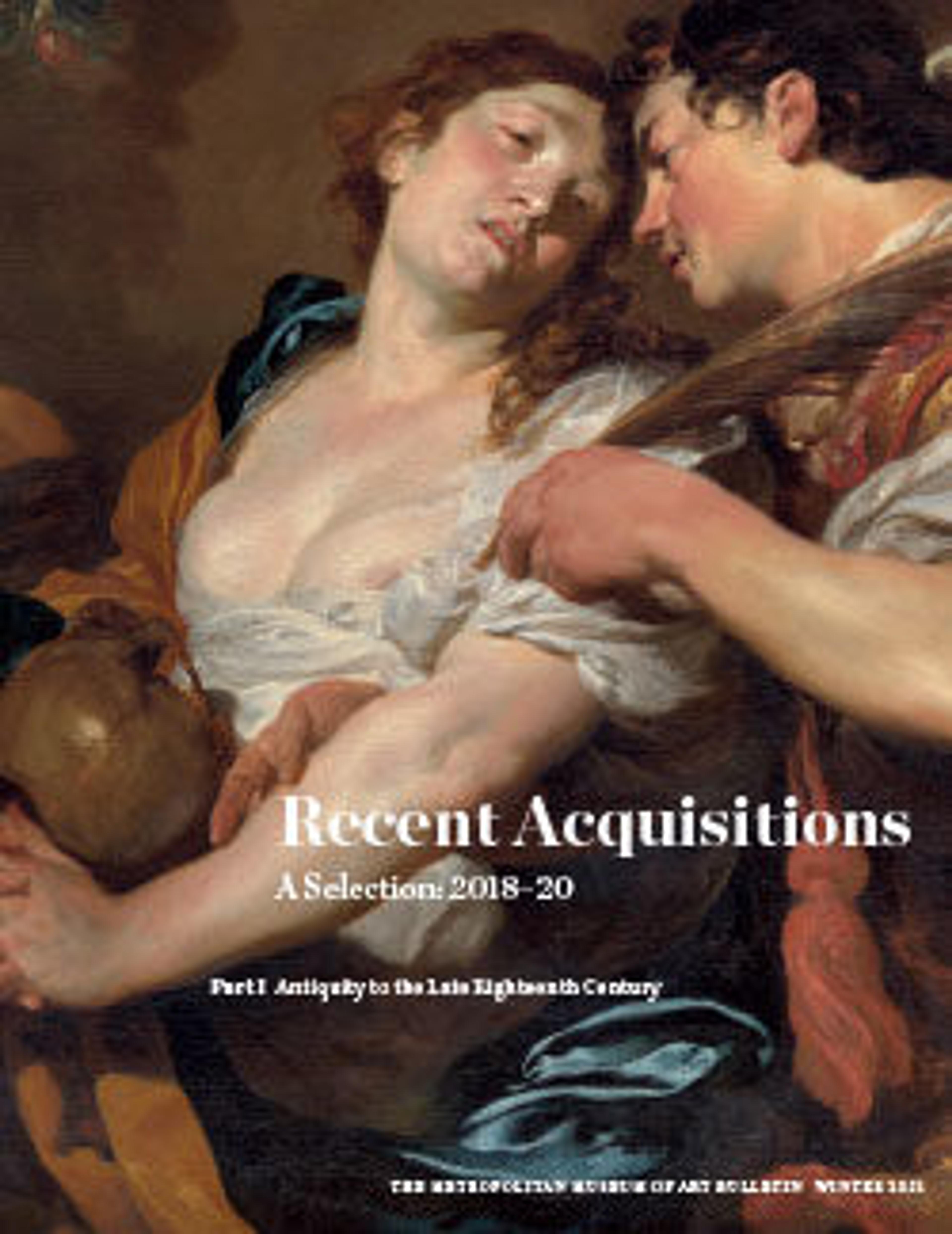Standing female figure
This female figure features incised, black hair, styled with bangs framing the face in front, and pulled straight back behind a black appliqued headband with an incised zigzag pattern accented with white lines, which ties in the back. Her face is smoothly finished with the brows indicated in relief. The eyes are thickly outlined in black slip. On the lower half of her face, vertical lines of black face paint taper as they extend below the chin. The lips are parted, revealing white teeth outlined in black but not incised. She wears a necklace of three plain appliqued bands that tie in back and from which a simple, wide crescent pendant is suspended in front. Her nose is adorned with a three-looped nose ring attached to her septum. Her undecorated short skirt is distinguished by a burnished black slip, and her legs are a rich shade of sienna. Her left arm is raised, and in the palm of her right hand, held up to her shoulder, is a small bowl.
This figure may be part of a group created by the same artist or workshop, and appear to represent members of an important ancient West Mexican lineage or social group (Butterwick 2004: 83-87). Shared features and craftsmanship suggest that one artist made all three figures (see 2018.443.1, 2018.443.2), and they may have been deposited in the same shaft tomb in the Nayarit village where they originated. If the similarities between the two females were intended to show kinship, the figures might represent mother and daughter, or sisters in the same lineage. Alternatively, the two may portray a female of high status in two stages of her life: young (perhaps pregnant) and mature. The features shared by the male and the elder female, especially the emblematic conch bracelet, suggest that they belong to the same lineage. Lastly, the unusual fact that all three wear black leg paint may further indicate a common genealogy.
This figure may be part of a group created by the same artist or workshop, and appear to represent members of an important ancient West Mexican lineage or social group (Butterwick 2004: 83-87). Shared features and craftsmanship suggest that one artist made all three figures (see 2018.443.1, 2018.443.2), and they may have been deposited in the same shaft tomb in the Nayarit village where they originated. If the similarities between the two females were intended to show kinship, the figures might represent mother and daughter, or sisters in the same lineage. Alternatively, the two may portray a female of high status in two stages of her life: young (perhaps pregnant) and mature. The features shared by the male and the elder female, especially the emblematic conch bracelet, suggest that they belong to the same lineage. Lastly, the unusual fact that all three wear black leg paint may further indicate a common genealogy.
Artwork Details
- Title:Standing female figure
- Artist:Nayarit artist(s)
- Date:100–400 CE
- Geography:Mexico, West Mexico, Nayarit
- Culture:Nayarit
- Medium:Ceramic, slip
- Dimensions:H. 23 × W. 12 × D. 5 1/2 in. (58.4 × 30.5 × 14 cm)
- Classification:Ceramics-Sculpture
- Credit Line:Gift of Joanne and Andrall Pearson, 2018
- Object Number:2018.443.3
- Curatorial Department: The Michael C. Rockefeller Wing
More Artwork
Research Resources
The Met provides unparalleled resources for research and welcomes an international community of students and scholars. The Met's Open Access API is where creators and researchers can connect to the The Met collection. Open Access data and public domain images are available for unrestricted commercial and noncommercial use without permission or fee.
To request images under copyright and other restrictions, please use this Image Request form.
Feedback
We continue to research and examine historical and cultural context for objects in The Met collection. If you have comments or questions about this object record, please contact us using the form below. The Museum looks forward to receiving your comments.
